The National Museum Of The Royal Navy Hartlepool
Museum In Hartlepool, County Durham
All that would have been dock life around the 18th century and complete with one of The Admiralties Frigates, The HMS Trincomalee.
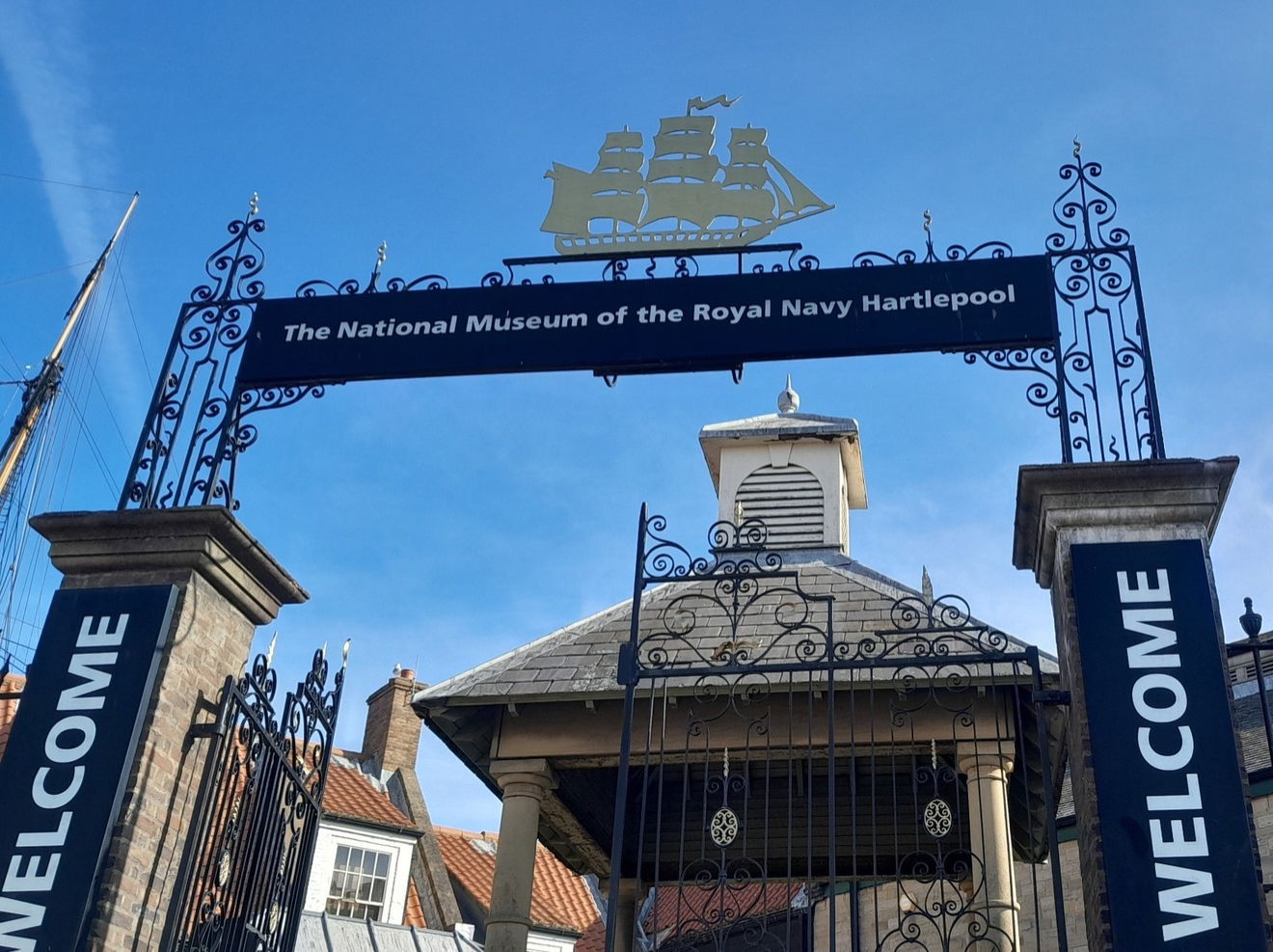
The National Museum Of The Royal Navy Hartlepool is a re-creation of an 18th-century seaport from the times of the Battle Of Trafalgar. There are lots of museums and exhibits to explore, but the main attraction here is the HMS Trincomalee, the oldest floating British warship.
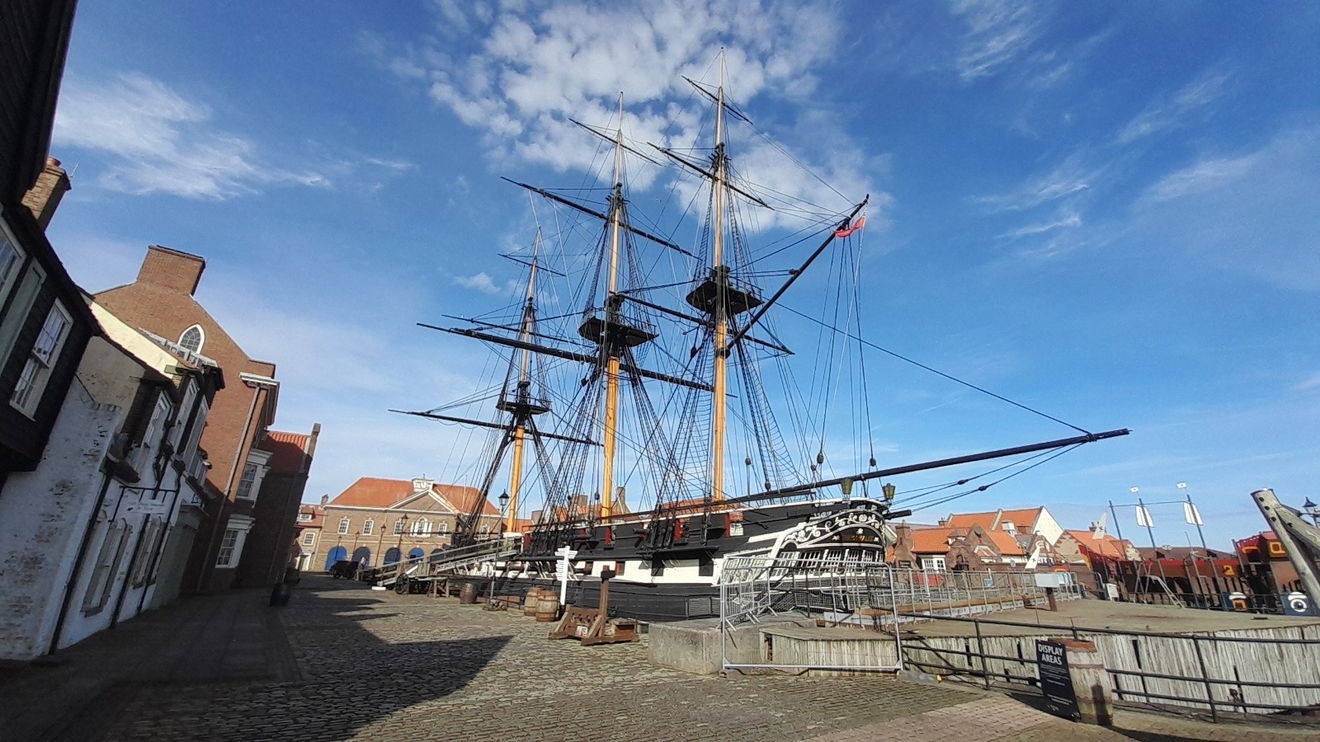

The HMS Trincomalee was commissioned in 1812, and built in Bombay, (modern-day Mumbai) India in 1817 after the plans were lost when the HMS Java was captured and burned by the American USS Constitution AKA Old Ironsides.
The advantage of it being built in India was that it was built from teak which is superior to the oak used for British-built ships. The oil in the teak was better at dealing with the salt water and temperature changes. Also it took less time to season than British oak which was in short supply due to the wars. The negative side of teak was its excessive weight and quality.
This Leda class frigate was designed and manned by The Royal Navy. Frigates were renowned for swiftness, durability, and action, but not necessarily comfort on the high seas.
The ship was christened Trincomalee after the port in Ceylon (now Ski Lanka). There had been a naval engagement and British forces won a significant battle.
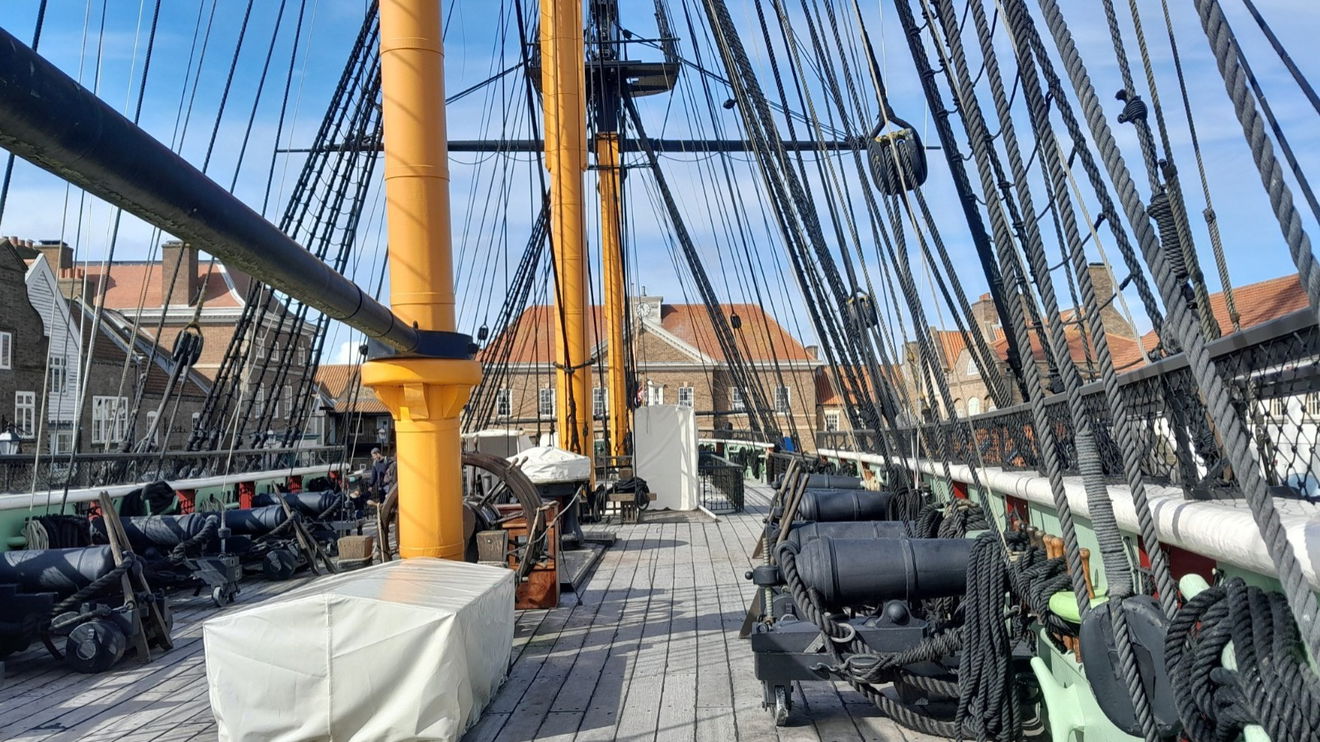


The builder was Jamsetjee Bomanjee Wadia (1754 to 1851) whom the figurehead resembles. However, the guidebook suggests it is more likely to be a person from Ceylon. The commissioning was during the time of Lord Horatio Nelson and Napoleon Bonapart, but not until after the Battle of Trafalgar in 1805 when the British fleet was victorious. This prevented The French from seizing control of Blighty. The Napoleonic Wars lasted to 1815.
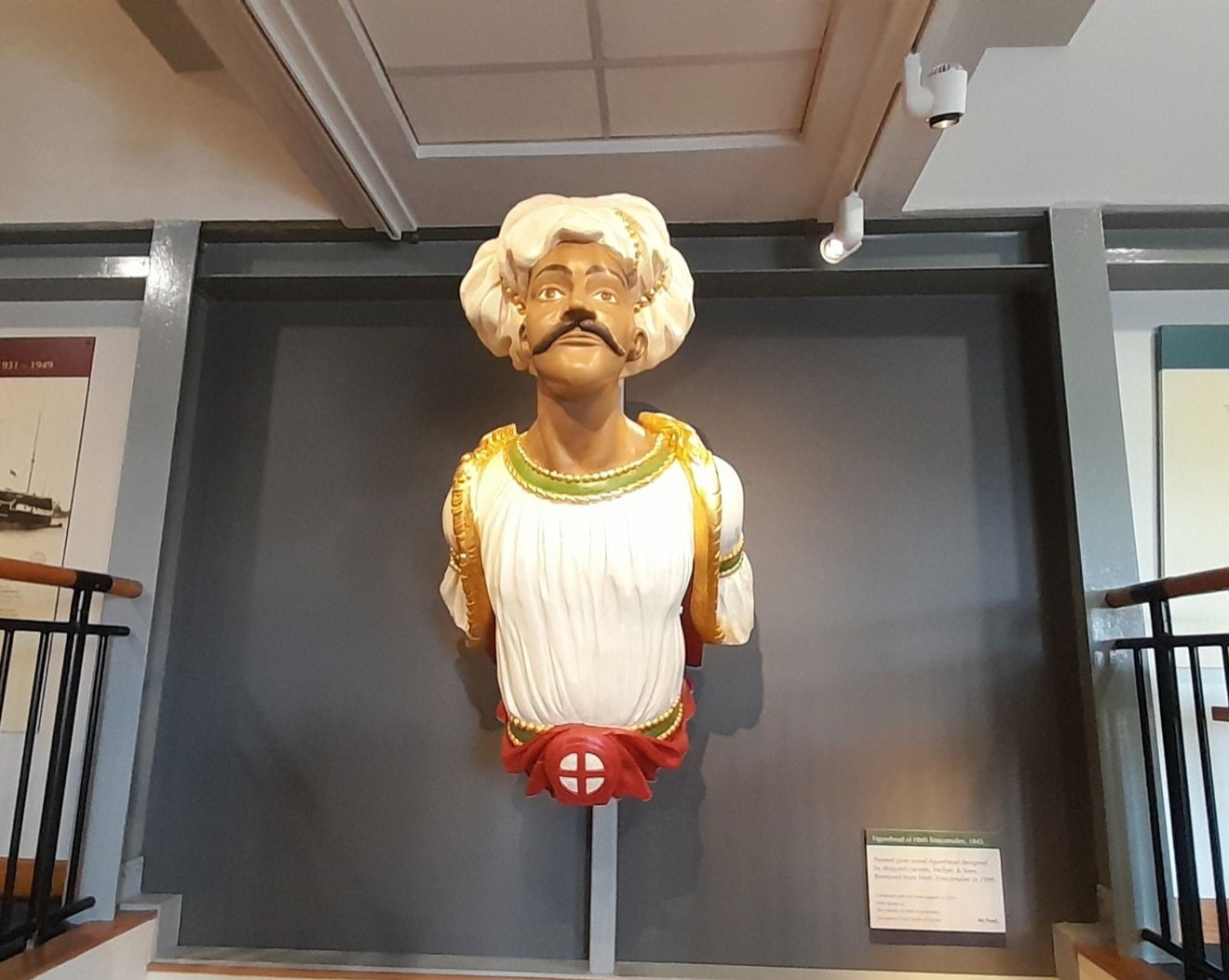
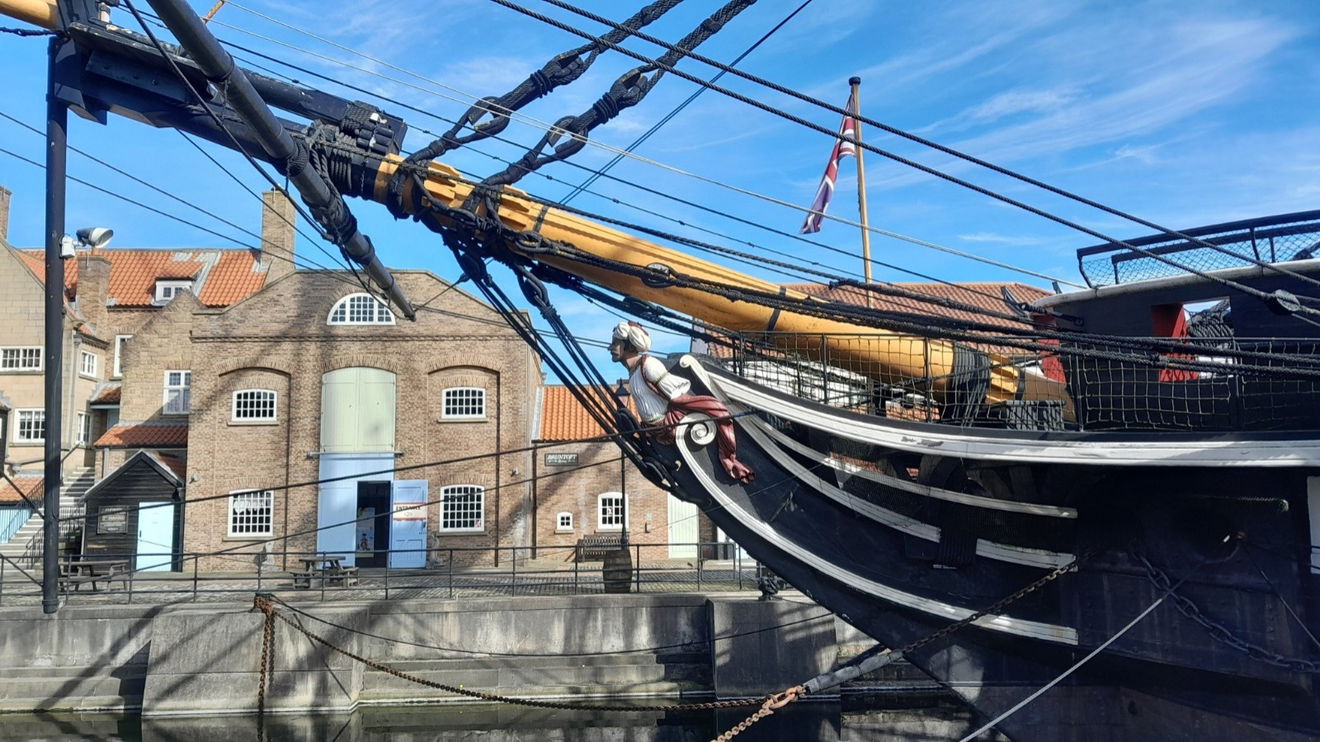
When HMS Trincomalee reached Portsmouth in 1819 It was 'laid up in ordinary' for 26 years until 1845. That was a lot of years! It means the masts were taken down and a shelter was built over the hull. The first commission (1847 to 1850) was to North America and the West Indies. This was after alterations so it now carried 26 guns. They were larger than the previous guns. As designed it originally had 38 guns and 12 Carronades. Imagine how many men that required!
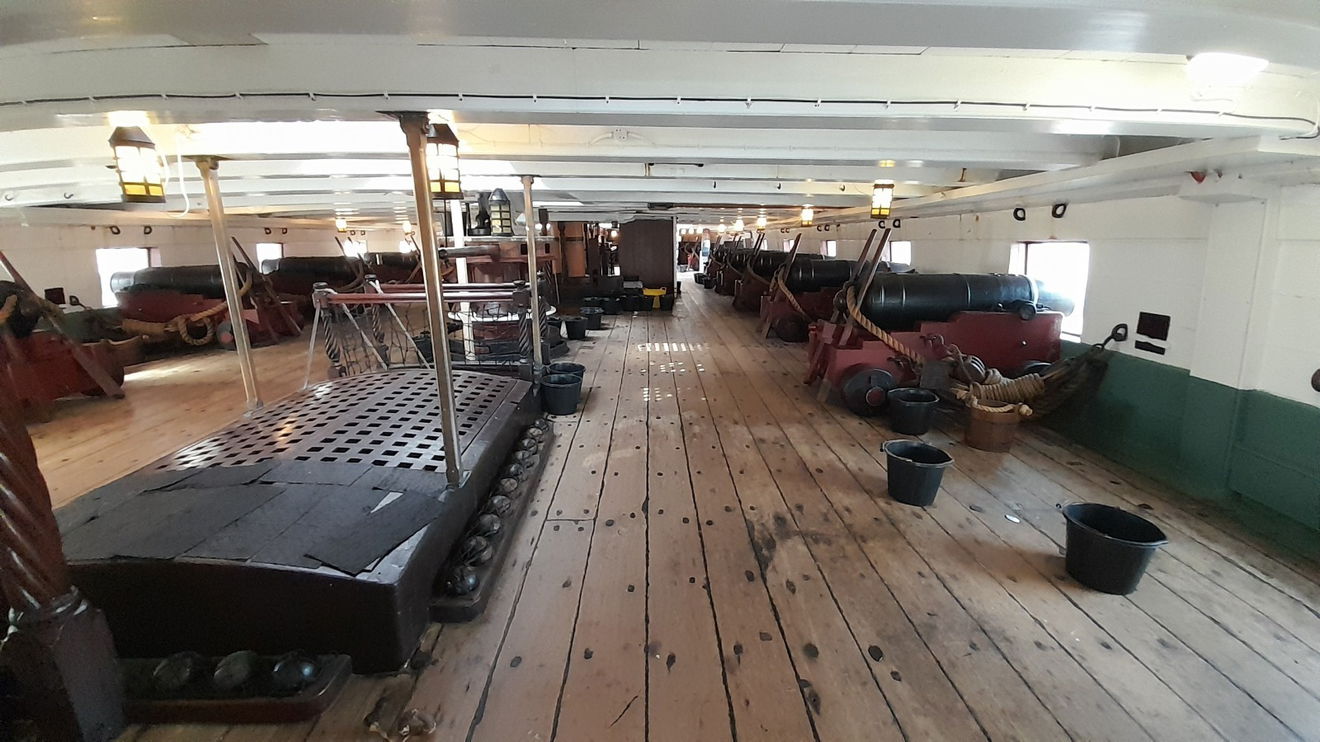
HMS Trincomalee was never involved in combat but travelled some 100,000 miles. It did policing, protection, and exploration work. From 1862 to 1877 she was based in Hartlepool and became a training ship from 1902 to 1992. She was known then as Training Ship Foudroyant which translates to Thunderbolt. It was so named after an 18th Century ship which had a rough time.
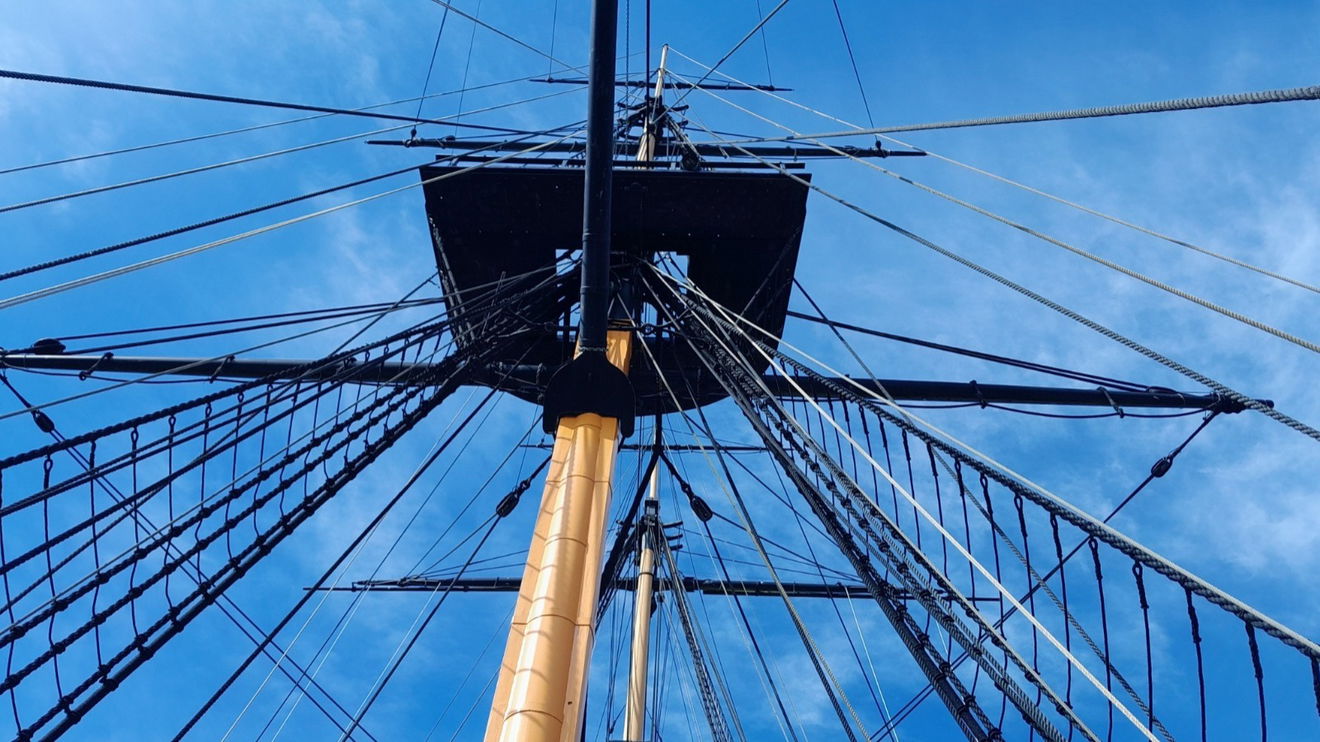
There was a need for restoration In 1987 and Hartlepool was chosen due to the the necessary skill set availability. During this time there were 3 fires onboard and a flood, so it nearly sunk in its moorings Fortunately the job got done and the Foudroyant Trust agreed that it could stay in Hartlepool. The Patron of the HMS Trincomalee was the late HRH The Duke of Edinburgh Prince Philip. He also helped to ensure the ship got listed by the National Historic Ships Committee in London, which compiles a register of historic vessels for what it terms its 'Core Collection'. They initially snubbed requests as it was not considered to be British enough, however, they eventually did. This was important as they are an influential body.

When you go on board, you really feel the authenticity of this ship. There are pirates too, who can tell you about life, times, swords, and guns. Did you know Black Beard AKA Edward Teach had 5 pistols in his holster across his chest?
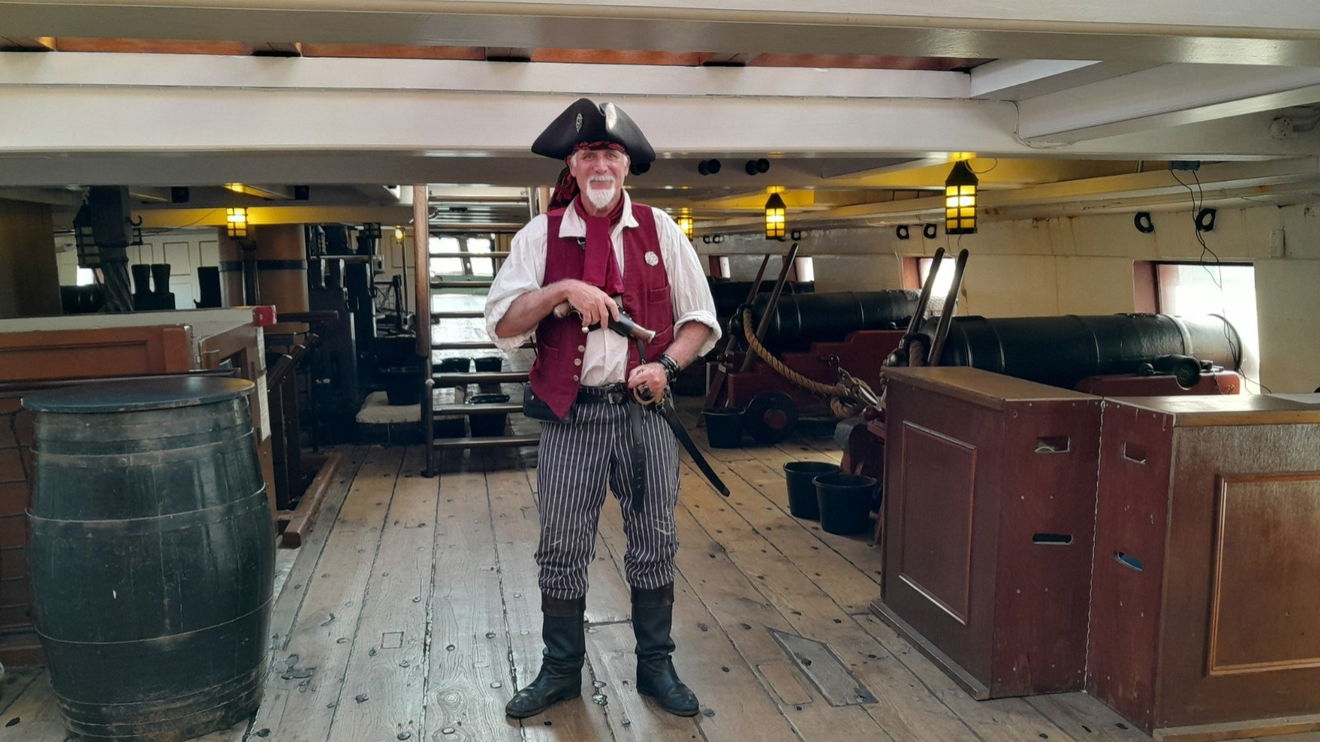
The captain had luxury with a spacious office and bedroom at the stern and below the Quarterdeck. There were two toilets AKA 'Heads' apparently so the Captain could choose which one to use depending on the wind! From the outside, there are some intricate carvings known as gingerbread.




As you go down each deck gets lower, so watch your head!
You can see the iron knees, which helped reinforce the hull of the frigate. The crew had cramped conditions where their hammocks were put out over their tables and then stored away during the day.


The officers dined in the Wardroom which is laid out for a meal.
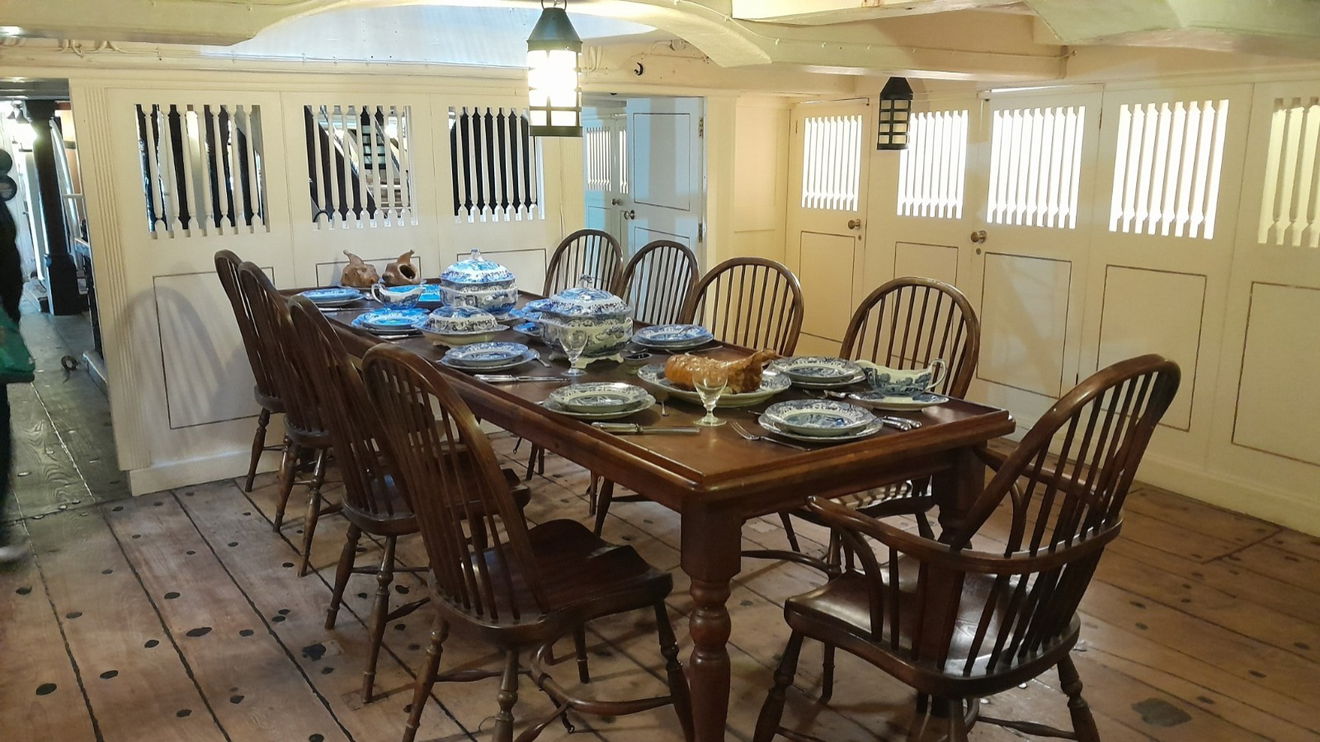
This Georgian dockyard has many things to hold your attention, whether it be the Navy, ships, pirates, gore, or fashion. The area is well laid out with true-to-life exhibitions, including human models and audio information covering this period of history.
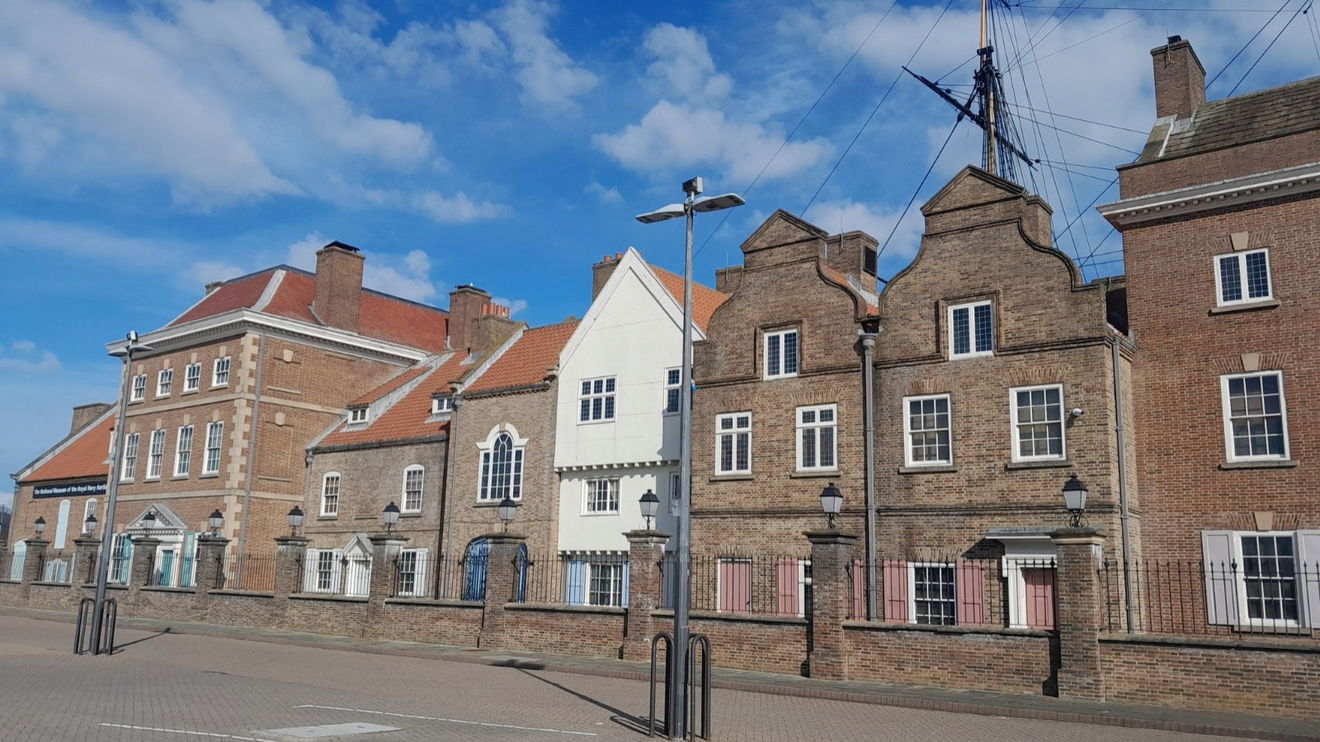
Your entry ticket is valid for a whole year, so if you miss something you can come again at no extra cost. Here are some brief details.
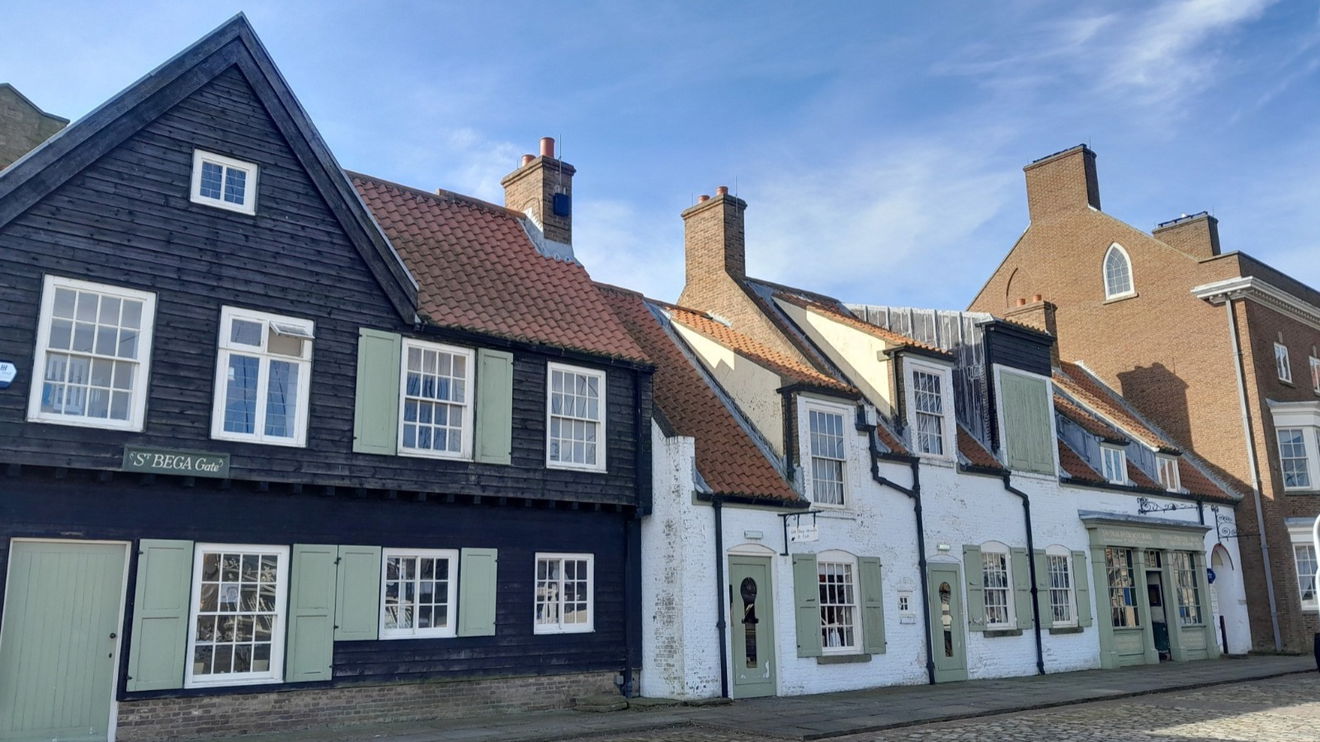






I read that the surgeon/doctor would sometimes leave buckshot in the injured person. The real threat of infection came from the clothes that would get sucked into this wound. So they had various tools to scrape out the soiled/germ-infested cloth. Some of the tools look quite alarming.


I believe there were upto a 1000 rats on board. From 1845 powder for the cannons was kept in sealed copper magazine containers that would not get gnawed or catch fire. The room in which the ammunition was kept did not have direct light from lamps as BOOM! it would easily ignite, so a light box was used. Same as the pantry where flour was highly explosive when small particles wafted in the air.
There are boxes of various parasites on display that were grim viewing. Weevils were a pesky nuisance as they would get into the crew's staple diet of biscuits made from flour, salt, and water, no sugar as we enjoy these days. The weevils didn't create any diseases or do any harm to a person, unlike the tapeworm.



In the sunlight, one of the carvings made me think of the poem by William Blake, 'Tyger Tyger burning bright' There is some information about these catsheads.
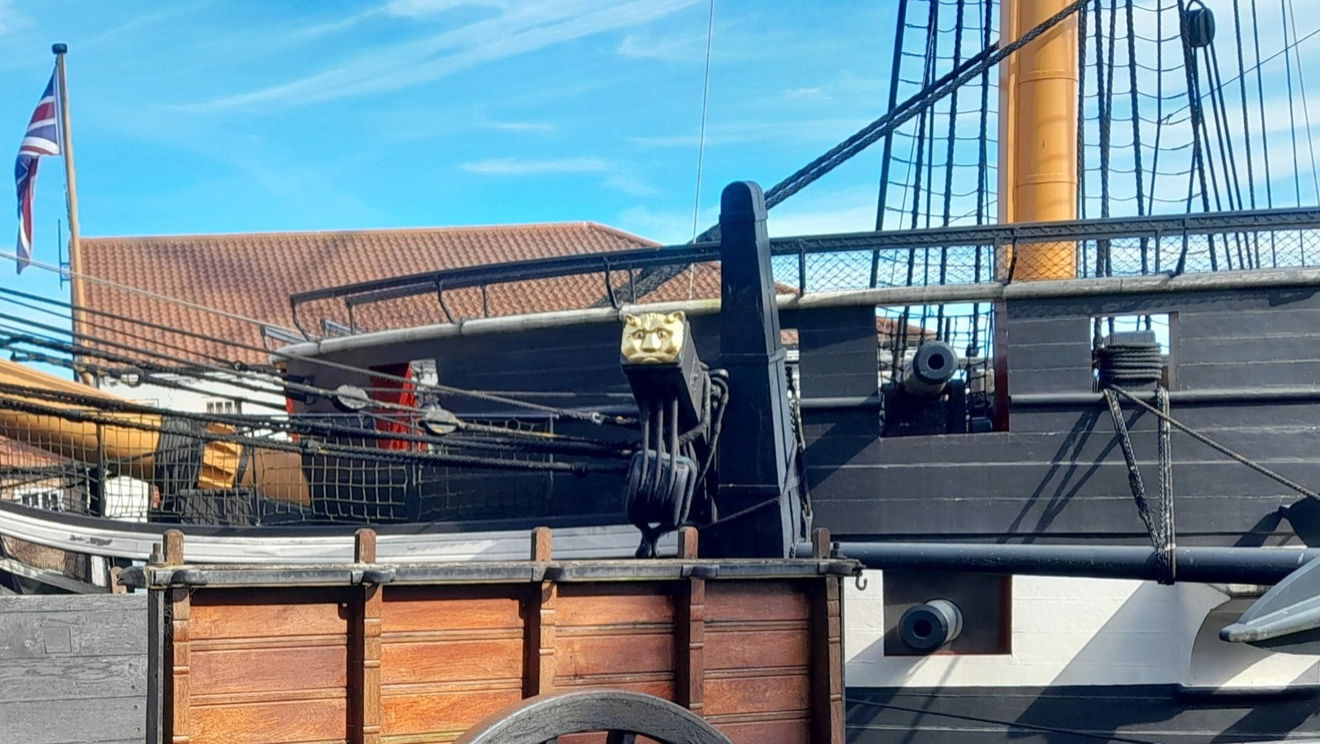


There were logs kept (like Star Trek's Captain's Log) aboard these ships. They were fact-based and recorded the journey, weather conditions, scientific finds, commercial needs, politics, signals, and orders. Soldiers, Crew, and passengers would keep their diaries, obviously biased to their view of situations. The illustrations are to a high standard too and amusing.


You'll have a grand time or 'shiver me timbers!'
Get 2 points if you have visited this place. Already visited by 55 VIPs.
Login to the VIP area to add places to your bucket list, mark them as visited and more importantly see where you rank on the league table.
How To Find The National Museum Of The Royal Navy Hartlepool
Where Is The National Museum Of The Royal Navy Hartlepool?
Lat / Long
54.690209, -1.20803
What three words
Where To Park For The National Museum Of The Royal Navy Hartlepool?
Lat / Long
54.69002, 54.69002
What three words
Free parking on site
Contributed by Rosalind Parker
Thanks for reading through and getting to the end of this post. I enjoy exploring the Fabulous North (Especially as a Southerner residing up North). I like 'snippets' of information, and more so, if they are obscure, amusing or meaningful. The photographs are taken on a mobile phone, without any enhancements.
More Places from Rosalind
More Places In Hartlepool
Find more fabulous places in Hartlepool, County Durham and if you know of a place we haven't listed, then let us know.
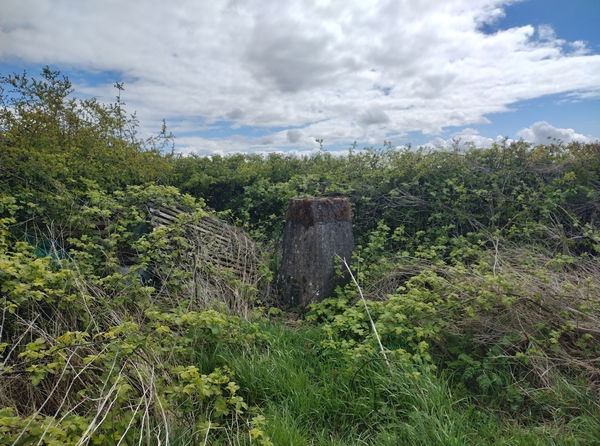
Reddings Hill Trig Point
Trig Point Hartlepool County DurhamThe Reddings Hill trig point sits in the corner of a field (147m) near Hurworth Burn Reservoir, Wingate, Hartlepool.

The Heugh Battery Museum at Hartlepool Headland
Museum Hartlepool County DurhamThe site preserves the only First World War battle site in Blighty.
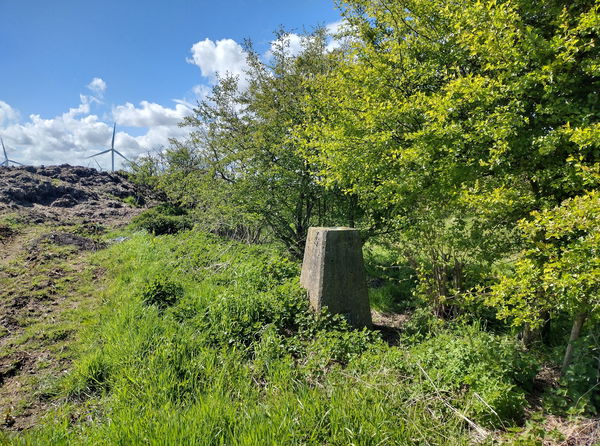
Embleton Old Hall Trig Point
Trig Point Hartlepool County DurhamThe Embleton Old Hall trig point sits by a hedge (114m) north of Embleton Old Hall near Sedgefield.
More Museums
So this museum wasn't enough and you want more? Don't worry we have you covered.

Bowes Museum
Museum Barnard Castle County DurhamDesigned and built as a museum in the style of a French Chateau and housing 22 galleries. Famous for the amazing kinetic art of the Silver Swan.
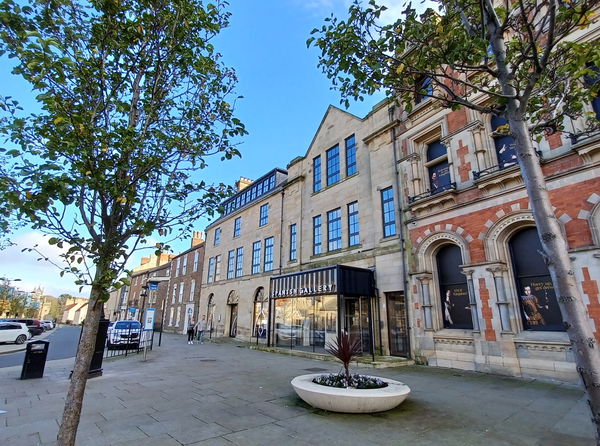
Spanish Gallery and Mining Art Gallery
Museum Bishop Auckland County DurhamTwo fantastic galleries in the heart of Bishop Auckland.
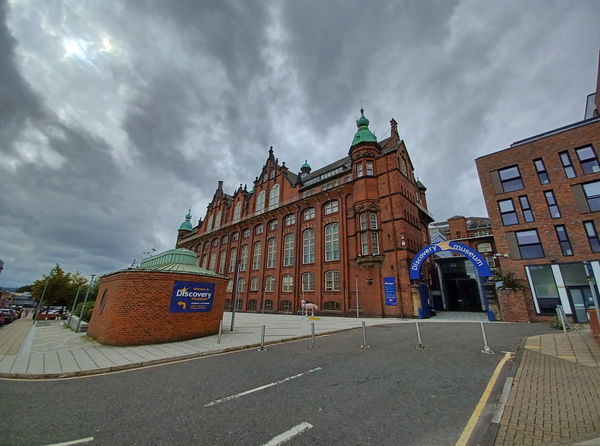
Discovery Museum
Museum Newcastle City Centre Tyne And WearA museum of science and industry housed in the former Co-operative Wholesaler Society Headquarters Building on Blandford Square.
Never Miss A Fabulous Place
If you are afraid of missing out on all the fabulous places we post, or just want to be the first to know, then sign up to the Fabulous North.
Each week we will email you all the brand new places that we visit.
Sign Up To AlertsFind Us On Facebook
We post all our new places daily on our Facebook Groups page, so join the group today and be notified when we add a new place.
Join Our Facebook GroupThe National Museum Of The Royal Navy Hartlepool was listed in Museum // County Durham // Hartlepool

